As with any piece of content, your primary objective is to attract the attention of your target audience. The best solution? Create content that answers their questions and emphasizes the benefits of your products. In other words, you should write blog posts that are useful and useful to your readers…When it comes to SEO, if you can’t match searcher intent, then you probably aren’t going to rank for your target keywords. This intent is used to inform website design and to help develop products that are likely to appeal to a specific type of searcher.
What is search intent?
Organic search intent represents the reason behind a searcher’s query. A matching search intent is one of those must-do things to show search engines that your page will fulfill its goal, to deliver the most relevant results for any given query. It might sound like you are trying to satisfy Google, but what you are actually doing is learning what you need to do to satisfy the searchers’ intent.
Identifying searchers’ intent is usually relatively easy. All you have to do is search for the keyword you want to rank, for example, on Google: “face cap for ladies.”
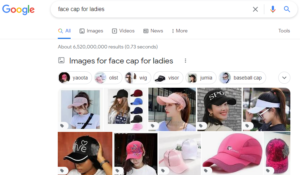
And then analyze the top-ranking results.
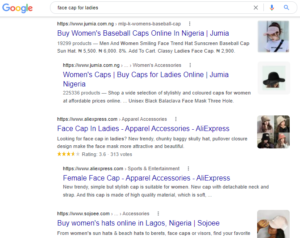
And the top-ranking results are an excellent proxy to understand search intent because Google understands what searchers want probably more than anyone else. Now analyzing is kind of a jargon word, but there are three simple proven formulas you can use. It is called the 3C’s of search intent.
The First C is Content Type
Content type is usually categorized into blog posts, videos, product pages, category pages, and landing pages. For example, the dominant type of pages for the query “face cap for ladies” are eCommerce category pages.”
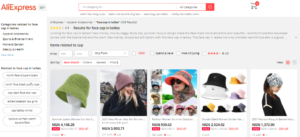
The Second C is Content Format
This applies more to blog posts and landing pages. A few common blog formats you will see are how-to guides, step-by-step tutorials, list posts, and opinion editorials. That may be something like a tool or calculator for a landing page. For example, the query “dollar to euro,” all of the top results are landing pages which makes sense because the query requires that a calculator tool will be required to do the conversion.
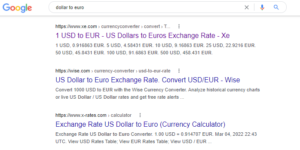
The Third C is the Content Angle
Content Angle often depicts the benefit of the content. It’s basically your hook as to why someone should click and visit your page. For example, looking at the query “best toothpaste for teeth whitening,” you see that most of the post has come with the freshness angle, which is evident based on the current year being added to the titles.
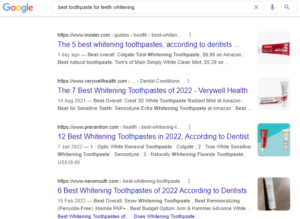
In my opinion, this is the least important and often least consistent amongst top-ranking pages. Now, this is just one example of search intent for a keyword.
Let’s go through a few more examples to really drill into this concept. The first example is for the query “machines for weight loss” the dominant content type is clearly blog posts, but you will also notice that some YouTube videos are ranking on the first page. So this tells us that there may be a need to create both, i.e., a blog post and a video, to potentially get two different spots in the search results.
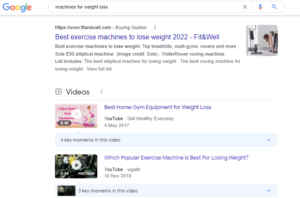
As for the content format, they are clearly all Listicles, and seeing as the nature of the topic will require a list of weight loss machines to try out, that’s probably the rule it wants to go to. And you can confirm this by visiting some of the top-ranking pages. Now, with the content angle, it appears as though “best or popular” seems to be the right way to approach the topic.
The second example is for the query “best face cap for ladies” looking at the top search engine result pages; you will see that they are all eCommerce category pages which tells us that when people search for this query, they are likely in shopping mode.
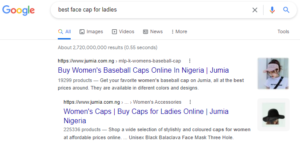
Now, saying that content format is mostly for blog posts and landing pages won’t apply here. As for the content angle, it seems to be mostly about deals to save you some money on ladies’ face caps.
The last example is for the query “best school bags” looking at the top search engine result pages; you will see something slightly different. We have a mix-up.
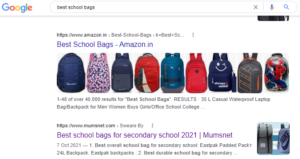
The content type for the top-ranking page is an e-commerce category page, then we have a couple of blog posts on the best school bags, and towards the bottom page, we have a couple of YouTube videos.
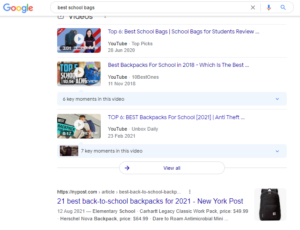
In summary, this article showed you how to use Google to figure out user intent and to determine what people are searching for. Make sure you apply this to your website, and it will help you get a better idea of what users want on your website.




Pingback: SEO BASICS: A Beginner’s Guide to Search Engine Optimization - MMO Guide
Pingback: On-Page SEO: what it used to be and what it is today. - MMO Guide